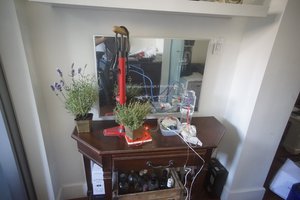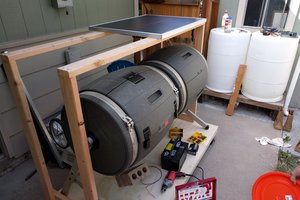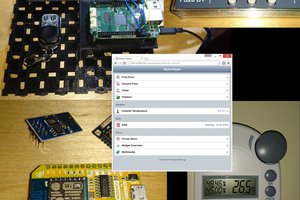- We wanted to run our garden with no grid power so that it could manage itself indefinitely (even when the power goes out).
- We wanted to be able to water the garden either using a timer or by pushing a button.
- We wanted a raised bed since this garden was going to be in a desert with terrible 'soil'.









- Voltage regulator stepping down the 12v power from solar charged battery to 5V for the Pi. Battery is in the shed and panels are on the roof.
- RPi camera. Used for capturing time lapses and making sure everything is green when we are away.
- Raspberry Pi A,B,B+,2 and 3 should all work just fine here.
- Thermometer that uses the OneWire bus. It is hanging outside of the enclosure in this picture to get a more accurate temp.
- Motion detection that uses a regular GPIO pin. As a side note: some plastic (such as this particular box) is opaque to IR. That is why the sensor is hanging out.
- Simple board that wires two GPIO pins to the relays, first going through a darlinton array which both amplifies the weak GPIO signal and also provides some induction backlash for free (super important if you value your Pis!).




 James Thomas
James Thomas

 DotPiDot
DotPiDot
 Jamie
Jamie
 SUF
SUF